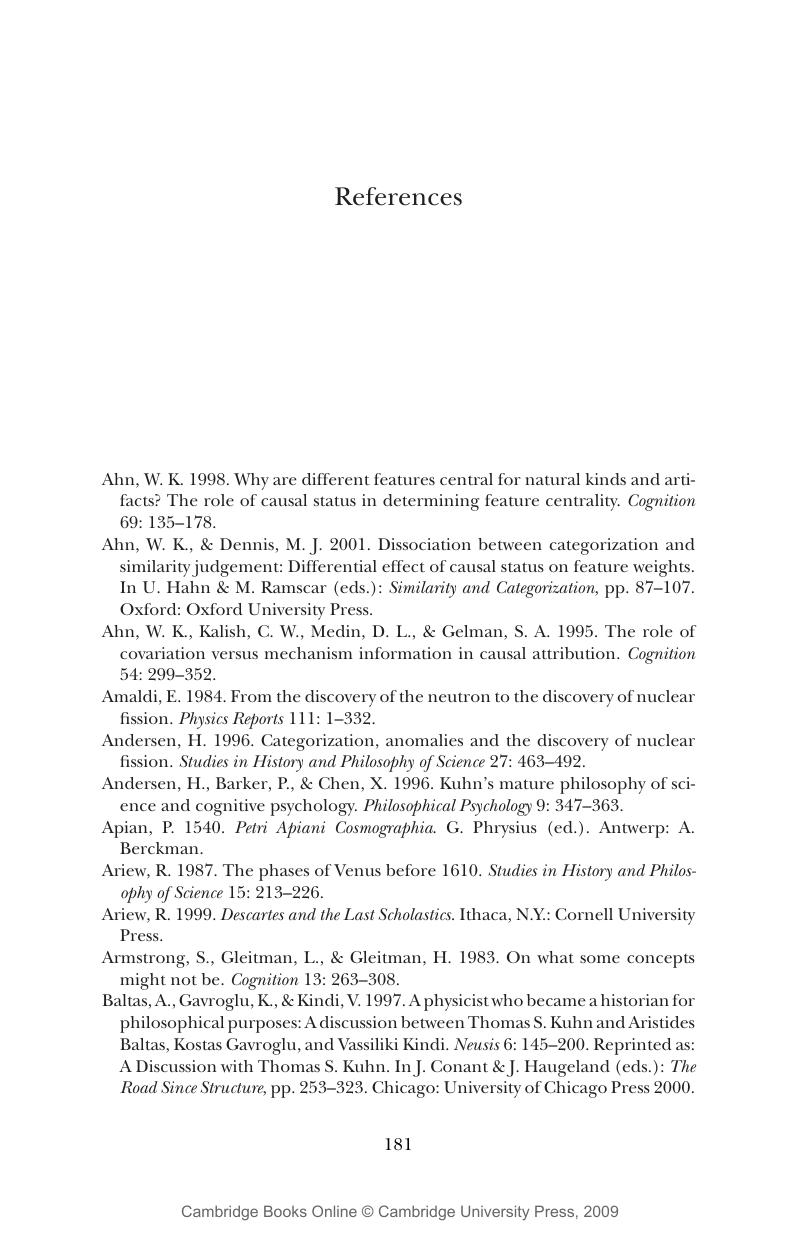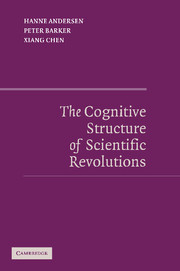Book contents
- Frontmatter
- Contents
- List of Figures
- Acknowledgments
- The Cognitive Structure of Scientific Revolutions
- 1 Revolutions in Science and Science Studies
- 2 Kuhn's Theory of Concepts
- 3 Representing Concepts by Means of Dynamic Frames
- 4 Scientific Change
- 5 Incommensurability
- 6 The Copernican Revolution
- 7 Realism, History, and Cognitive Studies of Science
- References
- Index
- References
References
Published online by Cambridge University Press: 18 July 2009
- Frontmatter
- Contents
- List of Figures
- Acknowledgments
- The Cognitive Structure of Scientific Revolutions
- 1 Revolutions in Science and Science Studies
- 2 Kuhn's Theory of Concepts
- 3 Representing Concepts by Means of Dynamic Frames
- 4 Scientific Change
- 5 Incommensurability
- 6 The Copernican Revolution
- 7 Realism, History, and Cognitive Studies of Science
- References
- Index
- References
Summary

- Type
- Chapter
- Information
- The Cognitive Structure of Scientific Revolutions , pp. 181 - 194Publisher: Cambridge University PressPrint publication year: 2006



